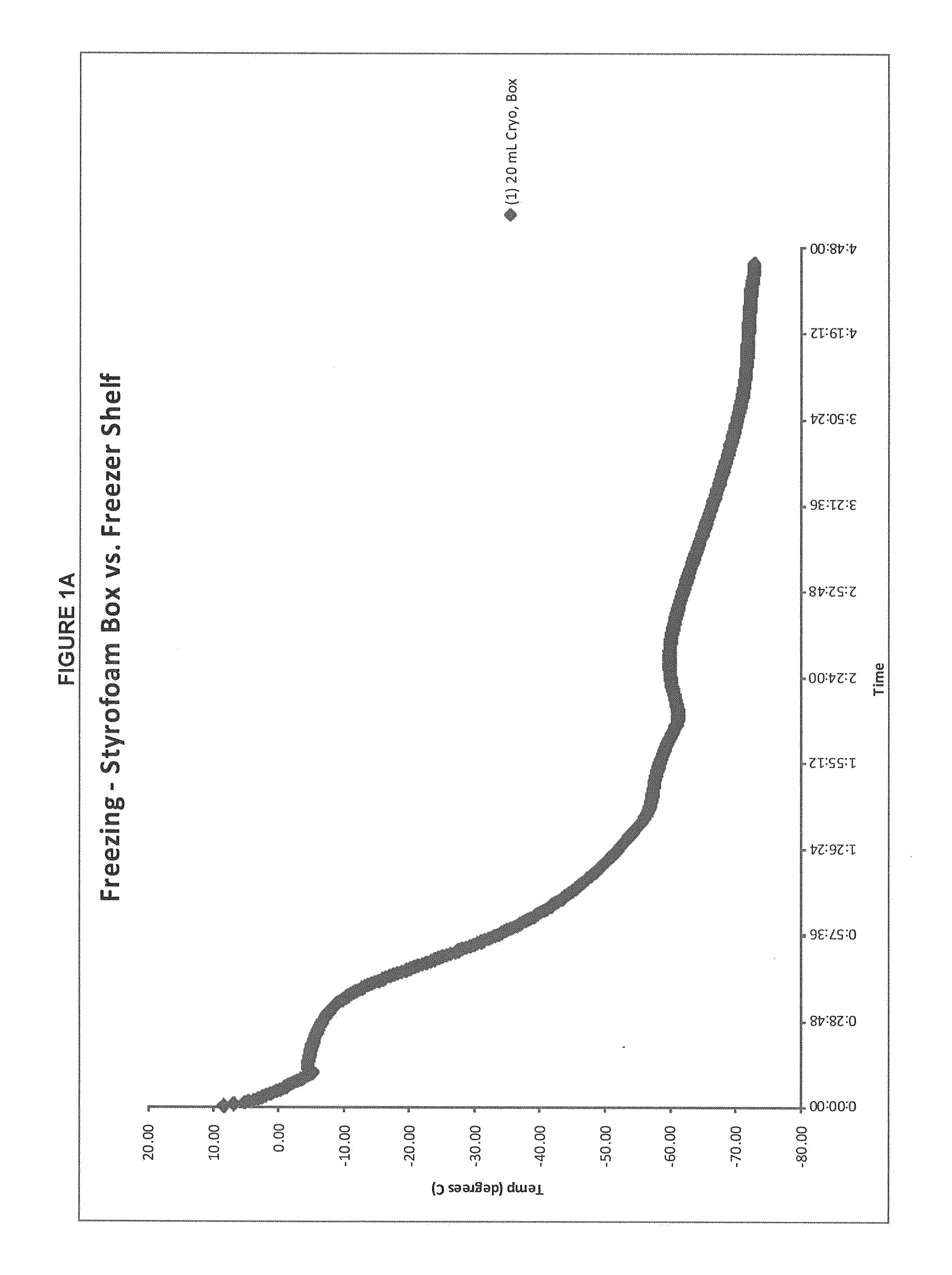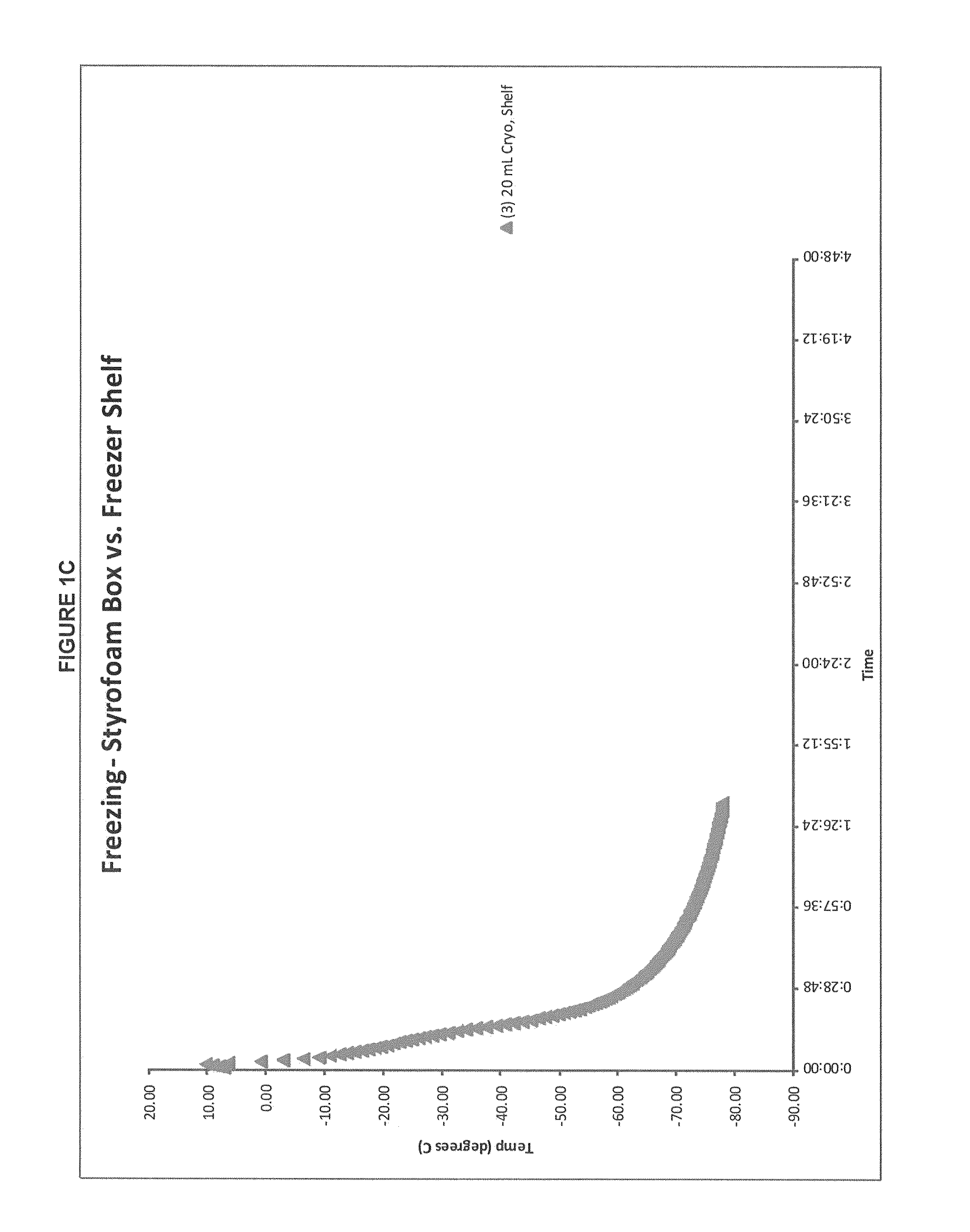Immunocompatible chorionic membrane products
a chorionic membrane and immunocompatibility technology, applied in the field of products, can solve the problems of increased risk of disease transmission, non-commercial wound healing products, less wound healing capacity of products with non-native cellular populations, etc., and achieve the effect of superior wound healing properties
- Summary
- Abstract
- Description
- Claims
- Application Information
AI Technical Summary
Benefits of technology
Problems solved by technology
Method used
Image
Examples
example 1
Characterization of Placental Membranes
[0321]Characterization of cells in placental membranes by Fluorescence Activated Cell Sorting (FACS) demonstrated the presence of stromal cells (Mesenchymal Stem Cell-like cells) in addition to fetal epithelial cells and fibroblasts in amniotic and / or chorionic membranes.
[0322]One unique characteristic of the presently disclosed placental products is the presence of MSCs, which have been shown to be one of three types of cells (in addition to epithelial cells and fibroblasts) that are important for wound healing. Placental membranes secrete a variety of factors involved in wound healing such as angiogenic factors, factors supporting proliferation and migration of epithelial cells and fibroblasts, factors attracting endothelial stem cells from blood circulation to the wound site, antibacterial factors, and others.
[0323]Evaluation of proteins secreted by exemplary placental products of the invention in comparison to Apligraf and Dermagraft demons...
example 2
Exemplary Manufacturing Process of a Placental Product
[0324]In one embodiment, the present application discloses a procedure for manufacturing chorionic membranes from placenta post partum.
example 2.1
Exemplary Manufacturing Process of Chorionic Membrane Product
[0325]One method of manufacturing a placental product comprising a chorionic membrane according to the presently disclosed manufacturing procedure is as follows:[0326]a. Remove umbilical cord close to placental surface,[0327]b. Blunt dissect of the amnion to placental skirt,[0328]c. Flip placenta over and completely remove amnion,[0329]d. Remove chorion by cutting around placental skirt,[0330]e. Rinse the chorionic membrane in PBS to remove red blood cells,[0331]f. Rinse the chorionic membrane once with 11% ACD-A solution to assist in red blood cell removal,[0332]g. Rinse the chorionic membrane PBS to remove ACD-A solution,[0333]h. Treat chorion in 0.5% dispase solution at 37° C.±2° C. for 30-45 minutes, optionally, during dispase incubation period, use PBS to remove any remaining blood from the amnion,[0334]i. When dispase treatment is complete, rinse chorion with PBS to remove dispase solution,[0335]j. Gently remove trop...
PUM
| Property | Measurement | Unit |
|---|---|---|
| thickness | aaaaa | aaaaa |
| period of time | aaaaa | aaaaa |
| temperature | aaaaa | aaaaa |
Abstract
Description
Claims
Application Information
 Login to View More
Login to View More - R&D
- Intellectual Property
- Life Sciences
- Materials
- Tech Scout
- Unparalleled Data Quality
- Higher Quality Content
- 60% Fewer Hallucinations
Browse by: Latest US Patents, China's latest patents, Technical Efficacy Thesaurus, Application Domain, Technology Topic, Popular Technical Reports.
© 2025 PatSnap. All rights reserved.Legal|Privacy policy|Modern Slavery Act Transparency Statement|Sitemap|About US| Contact US: help@patsnap.com



